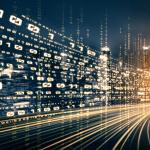In this series of articles, we delve deeper into the importance of finding the right balance...

Organisations continue to seek innovative strategies to enhance their profitability in the dynamic landscape of modern business. One such transformative journey involves the implementation of an Enterprise Profitability Programme (EPP), a strategic initiative designed to optimise financial performance across various facets of the business.
Embarking on this journey requires a comprehensive understanding of the organisation’s current state. A meticulous assessment of existing processes, systems, and performance metrics serves as the foundation for developing a tailored EPP. This initial phase involves collaboration between key stakeholders, including executives, department heads, and financial analysts.
In addition, a successful EPP implementation requires alignment with the organisation’s strategic objectives. Clearly defined goals, such as increased revenue, cost reduction, or improved operational efficiency, become guiding beacons throughout the transformation process. This step involves crafting a roadmap that outlines the milestones and timelines for achieving desired outcomes.
Most Common Mistakes when Implementing an Enterprise Profitability Programme
Learning from past attempts is an important check-in point for any transformational programme. Below, you may find some of the most common mistakes when implementing an EPP:

Figure 1
A. The EPP solution may address a lack of a reporting capability on profitability metrics rather than underlying process issues or source systems limitations. This approach distracts from understanding the leavers of successes and, mostly, becomes a one-off financial reporting outcome with limited benefits.
B. The ambition of what “good” will look like is output-driven rather than addressing the inputs and the quality of data to make the output relevant and accurate. Underestimating the data issues and complexity of the IT landscapes could lead to a tactical solution that further requires high manual and human intervention and support, subsequently leading to higher operational costs.
The approach to attribute the bulk sales cost and operating expenses at sales channels, product, and customer levels becomes a “technical cost allocation” exercise rather than attributing costs at the transactional level and finding business drivers. Subsequently, they can help us create benchmarking analysis, ultimately driving structural margin improvements.
C. In some cases, lack of profitability reporting is positioned as a Finance Reporting problem only rather than looking at it holistically to address business needs in a cross-functional and collaborative way.
D. In some other cases, the solution set-up can be considered a one-time effort instead of a structural and sustainable approach. If we treat it as a comprehensive process, reporting and monitoring of input and output can be embedded in the company’s operations.
E. Very few transformational programmes of this nature tackle the underlying data issues such as data availability, data access and data management. That said, we have to implement a wider data strategy and consider how its implementation can be done. It will increase the chances of success.
F. Profitability programmes do not address the definition of different profitability metrics that would be fit for purpose beyond the financial use cases. Therefore, not considering use cases across trading, operations, and commercial finance reduces the adoption of the tool and the likelihood of the different business units taking accountability for the actionable insights it produces.
Success Factors for Implementing Enterprise Profitability Programme
Once you have considered the above learnings, it is important to leverage factors that would make a successful implementation of such a programme:
Data-Driven Decision-Making
The integration of data-driven decision-making processes is central to the EPP journey. By leveraging advanced analytics tools, organisations can gain deeper insights into customer behaviours, market trends, and internal operations. This data-centric approach empowers decision-makers to identify areas of untapped potential and formulate strategies to capitalise on them.
Cross-Functional Collaboration
Implementing an EPP often necessitates breaking down silos within an enterprise. Cross-functional collaboration becomes a cornerstone as departments share insights and work collectively towards common objectives. Communication channels become streamlined, fostering an environment conducive to innovation and adaptability.
Technology Integration
Modernising the technological infrastructure is integral to the EPP journey. Implementing cutting-edge software solutions for financial forecasting, performance tracking, and predictive modelling enhances an organisation’s ability to adapt to market dynamics swiftly. Automation of routine tasks also frees up human resources for more strategic endeavours.
Change Management and Employee Engagement
A successful EPP implementation hinges on effective Change Management. Ensuring that employees are not only aware of the changes but are actively engaged in the process fosters a culture of adaptability. Training programs, workshops, and communication channels play a vital role in preparing the workforce for the evolving landscape.
Continuous Monitoring and Optimisation
Post-implementation, continuous monitoring becomes paramount. Regularly assessing the program’s performance against predefined metrics allows businesses to identify areas for improvement and optimisation. This iterative approach ensures that the EPP remains agile and aligned with the ever-changing business environment.
Realising the Fruits of Transformation
As the EPP takes root and matures, organisations can witness tangible improvements in profitability. Whether through increased revenue streams, streamlined operations, or enhanced customer satisfaction, the benefits of this transformative journey reverberate throughout the enterprise.
Conclusion
The transformation journey to implement an Enterprise Profitability Programme (EPP) is a dynamic process that demands strategic foresight, adaptability, and collaboration. Businesses can navigate this journey successfully by aligning organisational goals, leveraging data-driven insights, fostering cross-functional collaboration, and embracing technological advancements, unlocking their full potential for sustained profitability in an ever-evolving marketplace.
Subscribe to
FP&A Trends Digest

We will regularly update you on the latest trends and developments in FP&A. Take the opportunity to have articles written by finance thought leaders delivered directly to your inbox; watch compelling webinars; connect with like-minded professionals; and become a part of our global community.






